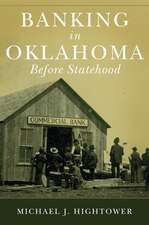For Each the Strength of All – A History of Banking in New York State
Autor J. T. W. Hubbarden Limba Engleză Hardback – 30 apr 1995
Preț: 547.80 lei
Preț vechi: 711.43 lei
-23% Nou
Puncte Express: 822
Preț estimativ în valută:
104.82€ • 109.74$ • 86.73£
104.82€ • 109.74$ • 86.73£
Carte tipărită la comandă
Livrare economică 07-21 aprilie
Preluare comenzi: 021 569.72.76
Specificații
ISBN-13: 9780814735145
ISBN-10: 0814735142
Pagini: 336
Dimensiuni: 152 x 229 x 15 mm
Greutate: 1.17 kg
Ediția:New.
Editura: MI – New York University
ISBN-10: 0814735142
Pagini: 336
Dimensiuni: 152 x 229 x 15 mm
Greutate: 1.17 kg
Ediția:New.
Editura: MI – New York University
Textul de pe ultima copertă
"Banking establishments", declared Thomas Jefferson back in 1799, "are more dangerous than standing armies". Such armies are no longer cause for serious alarm. But commercial banking institutions, while justly applauded as the prime architects of America's economic success, are still assailed today - most recently by victims of the savings and loan debacle - as little better than the freakish "hydra-headed monstrosities" of yesteryear. This lively, well-researched and handsomely produced book highlights the achievements of commercial banks, in the process distinguishing them from their more flamboyant competitors. In many ways the history of commercial banking in the state of New York constitutes the history of commercial banking for the entire nation. Under the guidance of the formidable but shadowy coalition of talent known as "The Albany Regency", New York pioneered such innovations as the insurance of paper currency, so-called "free" chartering of banks by any qualified group of citizens, a crude form of deposit insurance, and an ingenious central clearing house whose collective strength enabled the state, and ultimately the nation, to weather many of the world's most severe financial crises. Published to coincide with the Centennial of the New York State Bankers Association, For Each, the Strength of All not only delineates the great achievements and the great financial disasters of the last two centuries, but brings to life the colorful and often quirky men who made the key decisions at pivotal moments in the financial life of the nation. It throws new light on the celebrated duel between Hamilton and Burr (a fix that may have gone awry), the covert financing of the North in theCivil War years, and the negotiations (so secret that participants travelled under assumed names) that helped produce the Federal Reserve Act of 1913.











